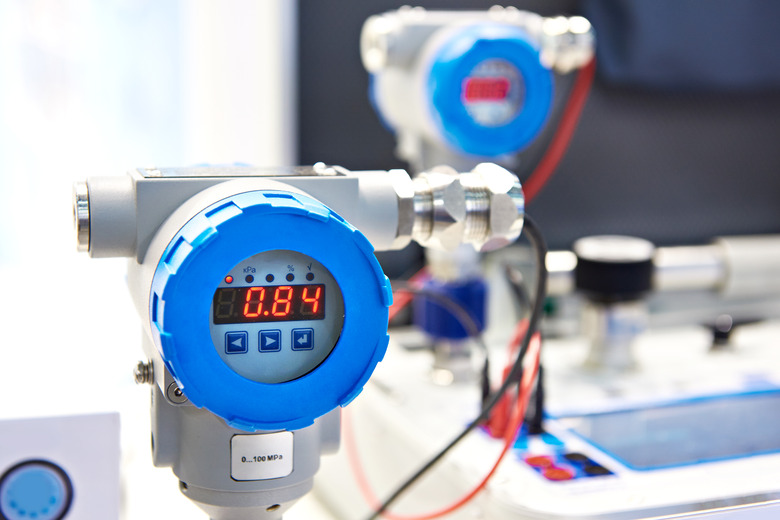How Do Piezoresistive Pressure Sensors Work?
About Pressure Sensors
About Pressure Sensors
Pressure sensors are what they sound like: devices used to measure pressure. They can be used to measure the flow of liquid, the weight or force exerted by one object on another, atmospheric pressure or anything else involving force. A pressure sensor can be as simple as a spring scale, which swings an arrow when pressure is applied to it. Many modern pressure sensors are much more sensitive than scales, and give an accurate output that can be measured electronically.
About Piezoresistivity
About Piezoresistivity
Piezoresistive materials are materials that change resistance to the flow of current when they are compressed or strained. Metal is piezoresistive to some degree, but most pressure sensors use the semiconductor silicon. When force is put on the silicon, it becomes more resistant to a current pushing through. This resistance is usually very linear–twice as much pressure results in twice as large a change in resistance.
How Piezoresistive Pressure Sensors Work
How Piezoresistive Pressure Sensors Work
A Piezoresistive Pressure Sensor contains several thin wafers of silicon embedded between protective surfaces. The surface is usually connected to a Wheatstone bridge, a device for detecting small differences in resistance. The Wheatstone bridge runs a small amount of current through the sensor. When the resistance changes, less current passes through the pressure sensor. The Wheatstone bridge detects this change and reports a change in pressure.
Cite This Article
MLA
David, Isaiah. "How Do Piezoresistive Pressure Sensors Work?" sciencing.com, https://www.sciencing.com/piezoresistive-pressure-sensors-work-4609318/. 19 November 2008.
APA
David, Isaiah. (2008, November 19). How Do Piezoresistive Pressure Sensors Work?. sciencing.com. Retrieved from https://www.sciencing.com/piezoresistive-pressure-sensors-work-4609318/
Chicago
David, Isaiah. How Do Piezoresistive Pressure Sensors Work? last modified March 24, 2022. https://www.sciencing.com/piezoresistive-pressure-sensors-work-4609318/
